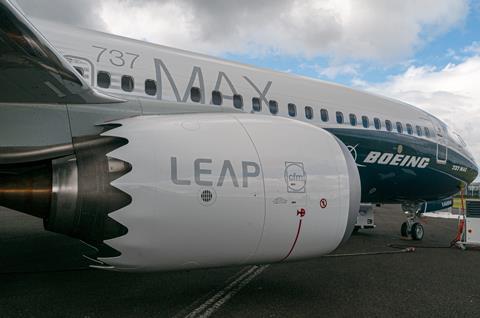Material shortages and other supply chain problems held back GE Aerospace’s engine production last year, with the company delivering 10% fewer CFM International Leap turbofans than it did in 2023.
“Supply chain constraints impacted total deliveries,” GE Aerospace chief financial officer Rahul Ghai said on 23 January during the company’s 2024 earnings call.
He also cites “ongoing material availability challenges”.
The comments came as GE Aerospace reported turning a $6.6 billion profit in 2024, down 30% year on year.

Though supply chain issues persist, company chief executive Larry Culp says GE Aerospace and its suppliers are making progress, albeit slowly, in addressing shortages that continue hindering output.
“We have tremendous confidence that we are coming into 2025 far better prepared for the [production] ramp than we were in 2024,” says Culp.
He predicts Leap deliveries will be up 15-20% year on year in 2025, noting that the company’s “priority suppliers” are now “shipping over 90% of their committed volume”, up from half at the start of 2024.
The company also says “material inputs across priority supplier sites” were up 26% in the second half of 2024 compared to the first half.
Airbus and Boeing are eager to increase production of narrowbody jets – the 737 Max and A320neo family, both of which are powered by Leaps. GE co-owns CFM with Safran Aircraft Engines.
GE delivered 1,911 commercial aircraft engines last year, down 8% year on year. Of those, 1,407 were Leaps, including the Leap-1As that power A320neos and the 737 Max’s Leap-1B. By comparison, Leap deliveries came in at 1,570 in 2023.
In the fourth quarter of last year, GE Aerospace delivered 519 commercial engines, down only 2% year on year, including 378 leaps, down 5%.
Companies up and down the aerospace supply chain have struggled to meet surging demand in recent years, hobbled by factors including staff and material shortages. Engine makers have been particularly affected by limited supply of metallic components, including high-pressure turbine blades.
GE Aerospace did make progress last year, but it “came in fits and starts. It was a game of inches”, Culp says. “I think that will continue to be the case in 2025. There is no step-function improvement necessarily sitting out there on the [high-pressure turbine] blades.”
Though deliveries declined, GE Aerospace’s Commercial Engines & Services business turned a $7.1 billion profit in 2024, up 25% year on year. It generated revenue of $26.9 billion during the year, up 13% from 2023.
Culp says the company “delivered a stand-out year financially”.


























